Features of self-tapping seeds

The choice of fasteners in modern construction realities is truly huge. For each material and for specific tasks there is a hardware that is most suitable in terms of size and characteristics. Plasterboard structures are also attached using special screws. They are called seeds or bedbugs.
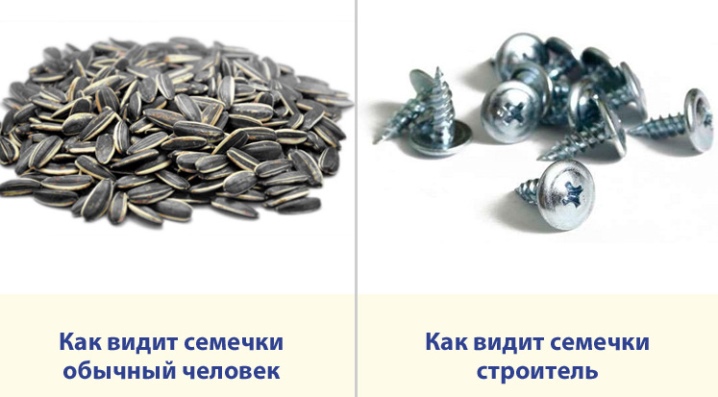
Description and purpose
Self-tapping screws are so-called self-tapping screws. The main feature of such products is that there is no need to make a hole for their installation in advance. These hardware themselves, in the process of screwing in, due to the special shape and grooves, make themselves the desired groove size.
The thread of any self-tapping screw has a triangular shape with sharp edges. Structurally, this hardware is a close relative of the screw, but the latter has less pronounced and sharp edges of the thread. Self-tapping screws are used for mounting and fixing a wide variety of materials: wood, metal and even plastic. This variety allows you to simplify work and achieve a high installation speed. For drywall, there are also fasteners - "seeds".
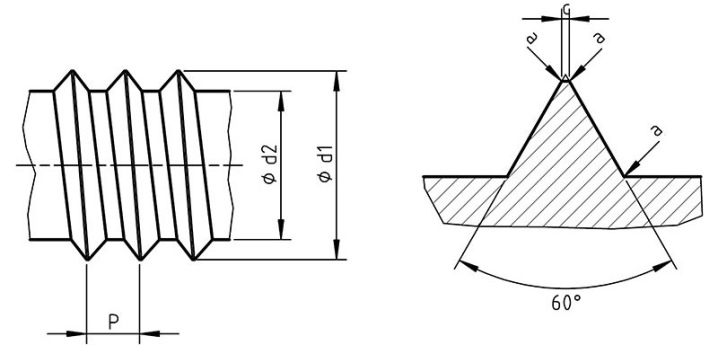
Self-tapping seeds differ from all their "brothers" primarily in their small size. But they also have their own design features. The head of the self-tapping bug has a wide and flat shape, from the edge of which there is a special roller that presses the part it fixes. Most often, this type of fastener is made from galvanized steel or from conventional steel using phosphating.
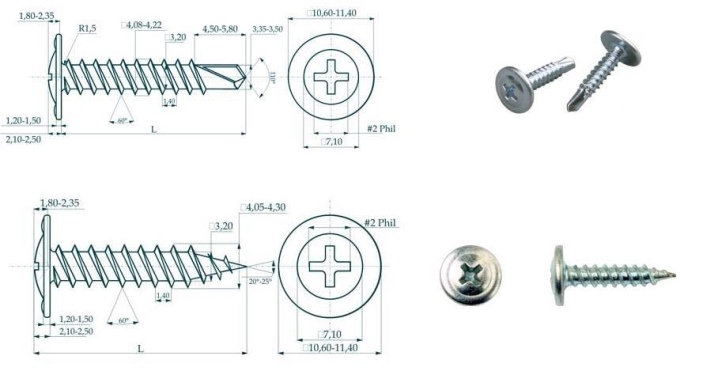
The variety of self-tapping seeds also includes products with a press jaw. The diameter of such hardware is 4.2 mm, and the length can be very diverse. For plasterboard structures, a length of up to 11 mm is used. Self-tapping screws with a press washer are reinforced types of fastening. This means that the taller trapezoidal head makes the slot deeper, which means the fastening is more reliable.
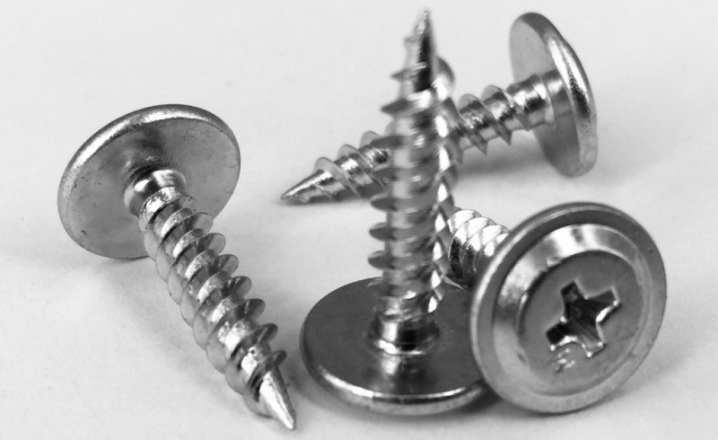
Depending on what material will be placed on the plasterboard structures - wood, plastic or metal, you can choose the most suitable hardware.
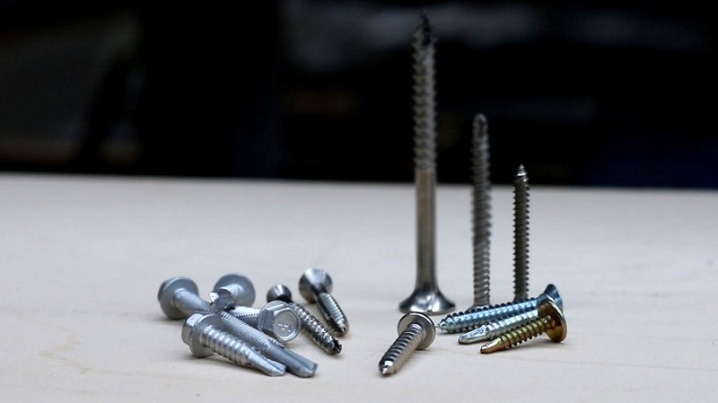
What are they?
There are few types of self-tapping seeds. First of all, they differ in design features.
- Tip shape. "Bedbugs" can have either a sharp end or a drill. Self-tapping screws with a drill are intended for fastening metal with a thickness of 2 mm, and sharp screws - for sheets no more than 1 mm.
- Head shape. All GKL self-tapping screws have a semi-cylindrical head with a fairly wide base. This allows you to increase the clamping area of the two parts to be joined, as well as to close the fastener place.
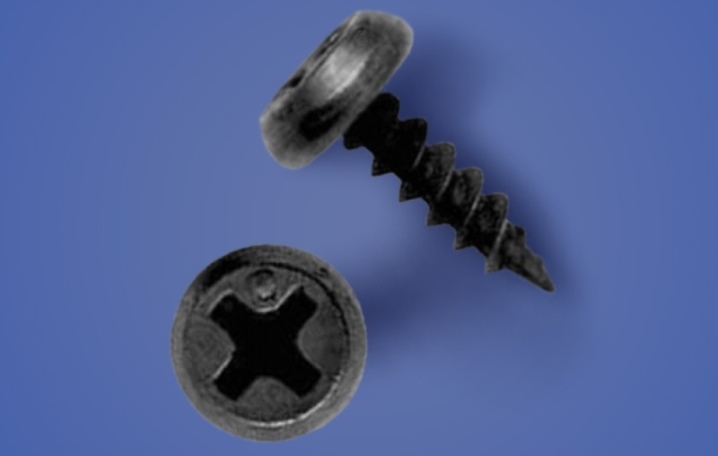
Self-tapping bugs are made of low-carbon, durable steel. However, in order to give these hardware increased anti-corrosion properties and thereby increase their service life, the products are covered with a special protective layer. It comes in 2 types.
- Phosphate layer. Self-tapping screws with such a top layer are black. Due to this protective layer, the adhesion of the paint coating to the hardware is improved, which means that for painting "seeds" with a phosphate layer is the best choice. Very often, after installation, such self-tapping screws are covered with a layer of bitumen varnish, which enhances the characteristics of the protective layer in high humidity conditions.
- Galvanized layer. "Bugs" with this type of protective coating have a silvery color, an attractive appearance and can even be used on decorative surfaces as a unique design element.
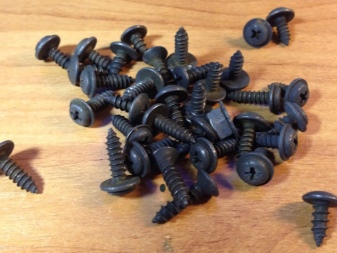

Also, self-tapping seeds have various sizes and are of several types:
- 3,5х11 - galvanized with a sharp end;
- 3.5x11 - galvanized with a drill end;
- 3.5x9 - sharp galvanized;
- 3.5x9 - galvanized with a drill;
- 3.5x11 - phosphated with a sharp end;
- 3.5x11 - phosphated with a drill;
- 3.5x9 - phosphated sharp;
- 3.5x9 - phosphated with a drill.
The dimensions and outer coating of the self-tapping screw are selected based on the operating conditions of the structure, its dimensions, and the materials used.

Usage Tips
In order to work correctly with self-tapping seeds, you should adhere to the following practical recommendations.
It is very convenient to screw the screws into the gypsum board with a reverse screwdriver. The hardware is mounted using a special bit (Ph2), which controls the drilling depth. Thus, the head of the self-tapping screw screwed up to the stop is flush with the surface of the drywall. A good screwdriver and a suitable attachment are the key to quick and high-quality installation.
The self-tapping screw can only be tightened at an angle of 90 °. Otherwise, the slot may deform, and the head of the hardware will break off.

Fasteners "butterfly" are used in the work with gypsum board in cases where you want to attach something heavy enough to drywall. The device looks like a special plastic dowel with a self-tapping screw. To install it, you must first drill a hole in the sheet. When twisting the hardware, the internal mechanism folds and is very tightly pressed against the back wall of the drywall. There are several fundamental technical points:
- the hole for the "butterfly" is drilled with a diameter equal to the diameter of the dowel, and its depth should be 5 mm more than the size of the self-tapping screw;
- then the hole is cleaned of dust (using a construction vacuum cleaner), and the mount can be mounted.
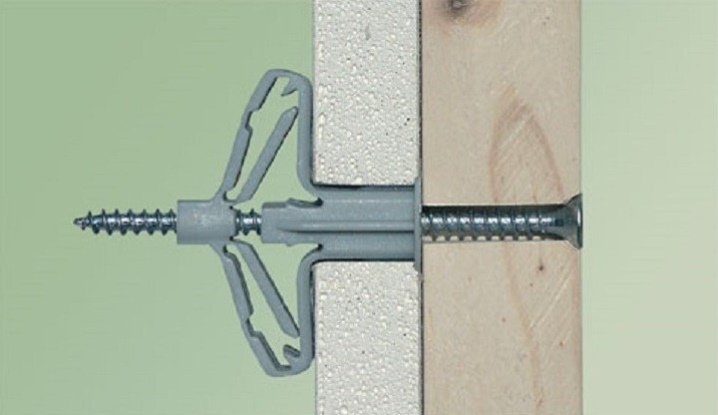
"Butterfly" is able to withstand a load of 25 kilograms.
In order for the fastening of the gypsum board to the profile to be reliable and of high quality, the required number of "seeds" should be taken into account. So, if the frame is made of wood, then the step of installing the hardware is 35 centimeters, and if it is made of metal, then from 30 to 60 centimeters.
If the structure has several layers of materials, then "bugs" of increased length are used. The length of the self-tapping screw must exceed the length of the materials to be joined by 1 centimeter.
A variety of fasteners allows you to choose high-quality hardware for any type of work. When working with drywall, reliability and installation speed are important, which is why self-tapping seeds are so in demand. With their help, all work with GCR goes many times faster, and the result is always pleasing.
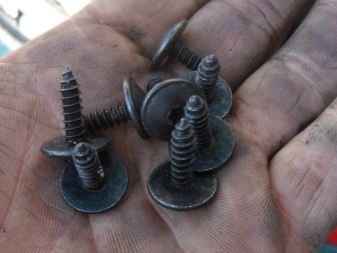
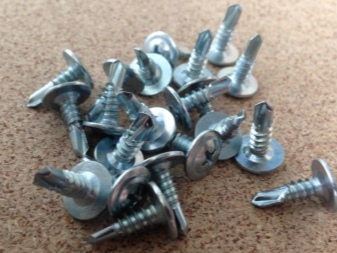
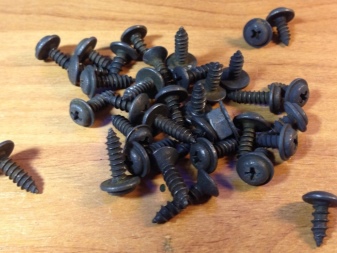
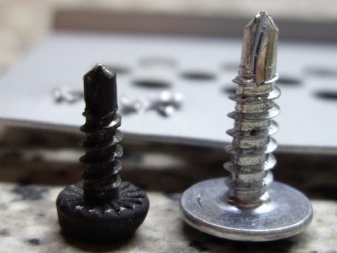
For how the "Bedbugs" screws look, see the next video.













The comment was sent successfully.